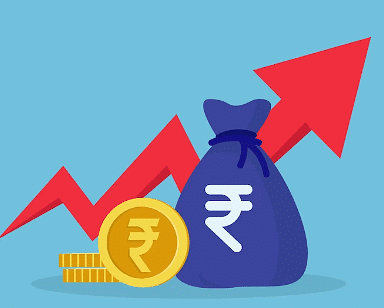SSC CGL Exam > SSC CGL Notes > SSC CGL Tier 2 - Study Material, Online Tests, Previous Year > Introduction to Economics
Introduction to Economics | SSC CGL Tier 2 - Study Material, Online Tests, Previous Year PDF Download

Understanding Economic Indicators
Gross Domestic Product (GDP):
- Definition: Total market value of all finished goods and services produced in a country in a given year.
Industrial Production:
- Definition: Reports on changes in the production of factories, mines, and utilities.
- Significance: Indicates potential price increases, supply shortages, and overall economic slack or tightening.
Employment Data:
- Significance: Sharp increases suggest economic growth, while significant decreases may indicate potential contractions.
Consumer Price Index (CPI):
- Definition: Measures retail price changes and consumer costs, serving as a benchmark for inflation.
- Importance: Releases can impact volatility in equity, fixed income, and forex markets.
Exploring Economic Systems: A Historical Overview
Primitivism:
- Individuals produce necessities at the household or tribal level.
- Activities include building dwellings, growing crops, and hunting game.
Feudalism:
- Lords hold land and lease it to peasants for production.
- Peasants receive safety and security from the lord in return.
Capitalism:
- Emerged with the industrial revolution.
- Business owners organize resources to produce goods for market consumption.
- Prices determined by supply and demand in markets.
Socialism:
- Form of a cooperative production economy.
- Limited or hybrid private ownership of means of production.
- Prices, profits, and losses not sole determinants in production decisions.
Communism:
- Economic activity centralized through state-sponsored central planners.
- Common ownership of production and distribution.
List of terms one should be familiar with to understand the concepts going further

The document Introduction to Economics | SSC CGL Tier 2 - Study Material, Online Tests, Previous Year is a part of the SSC CGL Course SSC CGL Tier 2 - Study Material, Online Tests, Previous Year.
All you need of SSC CGL at this link: SSC CGL
|
1335 videos|1432 docs|834 tests
|
FAQs on Introduction to Economics - SSC CGL Tier 2 - Study Material, Online Tests, Previous Year
| 1. What are economic indicators and why are they important? |  |
Ans. Economic indicators are statistical measures used to assess the overall health and performance of an economy. They provide valuable information about economic trends, such as growth, inflation, employment, and consumer spending. These indicators help policymakers, businesses, and investors make informed decisions and predict future economic conditions.
| 2. What are some common examples of economic indicators? |  |
Ans. Some common examples of economic indicators include Gross Domestic Product (GDP), Consumer Price Index (CPI), Unemployment Rate, Retail Sales, Industrial Production, and Stock Market Indices. These indicators provide insights into the overall economic activity, inflation, employment levels, and the performance of various sectors of the economy.
| 3. How are economic indicators measured and reported? |  |
Ans. Economic indicators are measured using various data collection methods, including surveys, government reports, and official statistics. For example, GDP is calculated by adding up the value of all goods and services produced within a country during a specific period. These indicators are then reported regularly by government agencies, central banks, and international organizations like the International Monetary Fund (IMF) and World Bank.
| 4. How do economic indicators impact financial markets? |  |
Ans. Economic indicators have a significant impact on financial markets as they provide insights into the health and direction of the economy. Positive indicators, such as high GDP growth or low unemployment rates, often lead to increased investor confidence, higher stock market prices, and a stronger currency. Conversely, negative indicators can trigger market volatility, sell-offs, and currency depreciation.
| 5. Can economic indicators accurately predict future economic conditions? |  |
Ans. While economic indicators provide valuable information about the current state of the economy, they are not foolproof in predicting future conditions. Economic forecasting is a complex task that involves analyzing multiple indicators, considering various factors, and making assumptions about future trends. While indicators can offer insights, unexpected events, policy changes, or external shocks can significantly impact economic outcomes. Therefore, economic indicators should be used as a tool for analysis and decision-making rather than solely relying on them for predicting the future.
Related Searches

















